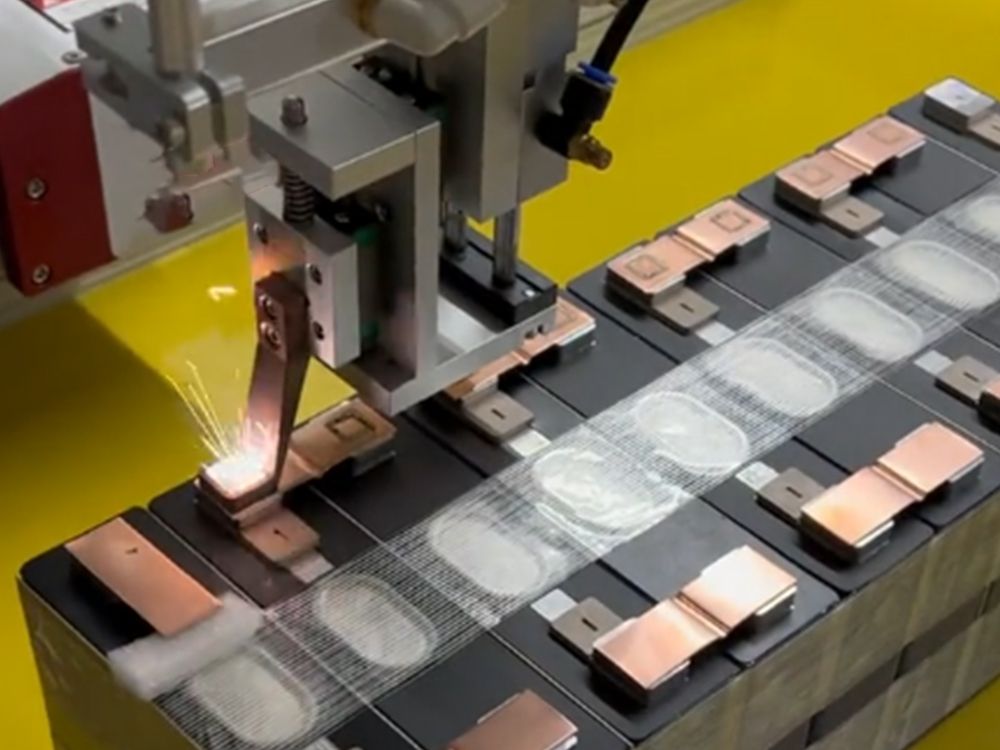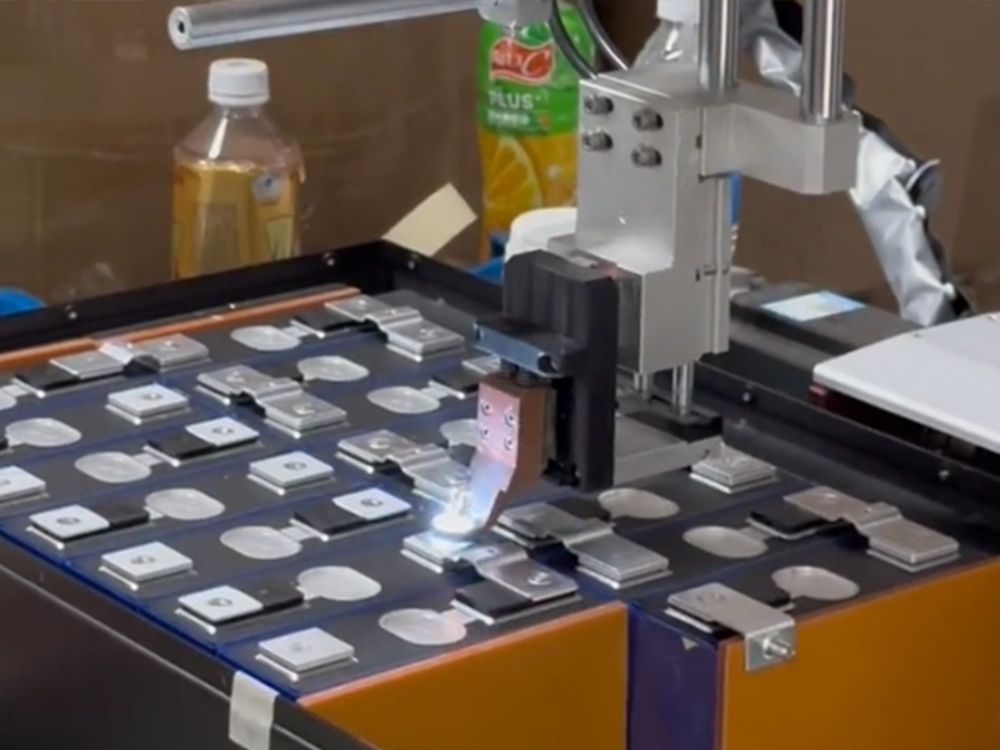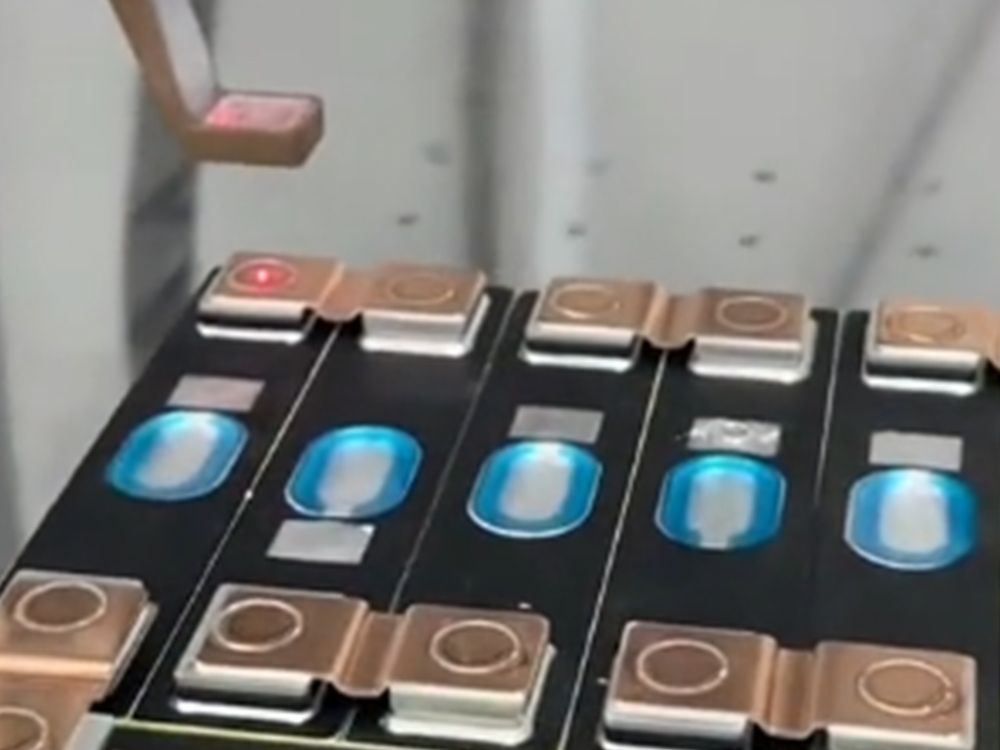With the continuous development of modern technology. Lithium battery has gradually become one of the representatives of new energy. It is increasingly widely used in various fields. In the production process of lithium batteries. Laser welding technology has become an essential link. Lithium battery laser welding machine has the characteristics of high efficiency and precision. It has become an important tool for lithium battery manufacturers.
Technical overview of cell laser welding machine
Laser welding machine battery technology uses laser beams to locally heat and melt lithium battery materials. bring it to a molten state. Then quickly cool and solidify. Finally, the material connection and repair are realized. Compared with traditional methods such as resistance welding and ultrasonic welding. Advantages of higher precision and better controllability of laser welding. It’s faster. At the same time, there is no direct mechanical contact. Therefore it is also less damaging to the material.
Lithium battery laser welding machine advantages
- Relatively low cost
The laser battery welding machine can avoid material waste and loss during use. And because of its high accuracy and high efficiency features. It can greatly reduce labor and equipment usage costs. You can choose HANTENCNC fully automatic battery laser welding machine with favorable price. It is very cost-effective. - Efficiency
The battery laser welding machine uses a laser beam for welding. It has fast welding speed and high production efficiency. At the same time, laser welding equipment can complete more welding tasks. Thus, the production efficiency of the entire production line can be improved. - High precision
The diameter of the laser beam is very thin, on the order of microns. When welding, extremely high positioning accuracy and solder joint quality can be achieved. Thereby ensuring the stability and life of the lithium battery. - High welding quality
The battery pack laser welding machine adopts non-contact welding method. That is, there is no mechanical contact. So it avoids the possibility of material damage after welding. At the same time, the laser beam locally heats the welding area. The material it heats reaches a high temperature instantly. Then cool quickly. It thus achieves rapid solidification of the welded area. Make the weld strong and beautiful.

Application of lithium battery laser welding machine
Lithium battery laser welding machines are widely used in all stages of the lithium battery production process. Including the following aspects:
- Plates and electrodes;
- Battery cover plate and series assembly; there are also welding and connection of terminals and other components.
In the production of lithium batteries, laser welding technology has become an indispensable link. Lithium battery laser welding machine through automatic control and intelligent management. It can realize efficient production and high-quality manufacturing of lithium batteries.
Future development trend of lithium battery laser welding machine
With the rapid development of industries such as new energy vehicles and smart phones. The market prospect of lithium battery laser welding machine is getting wider and wider. In the future, with the continuous advancement of laser technology. There is also the continuous expansion of its application fields. Lithium battery laser welding machines will present the following trends:
- Automated production.
Lithium battery laser welding machine combined with robot technology. It enables highly automated production. In the future, more companies will use robots for laser welding. Thereby improving production efficiency and product quality. - Intelligent control.
With the continuous development of artificial intelligence technology. Lithium battery laser welding machines will gradually realize intelligent control. Through the monitoring of the welding process, data analysis and processing. It enables the optimization and efficiency improvement of the production process. - Technological innovation.
In order to solve some difficult problems in the production of lithium batteries. In the future, lithium battery laser welding machines will introduce more technological innovations. For example, by changing parameters such as laser beam wavelength and pulse width. Targeted optimization is thus possible. Such as improving welding quality and efficiency. - Versatility.
Future lithium battery laser welding machines will have more functions. Such as laser cutting and drilling, engraving and so on. It can realize the integration of various processing tasks. This will effectively reduce equipment investment and floor space. Greatly improve equipment efficiency and economic benefits.
The development direction of lithium battery laser welding machine
Based on the above trends. Lithium battery laser welding machines will develop in the direction of intelligence and efficiency, as well as precision and versatility. In terms of intelligence, the equipment will gradually realize intelligent control. Realize the whole production data monitoring and information management. In terms of efficiency: through robotic production and process innovation. The device will achieve high efficiency and low cost. In terms of precision, the equipment will continuously improve welding quality and precision. In terms of versatility, more functional modules will be added to the device. Realize multi-process integration.
Next, let’s talk about the laser welding process of the power battery.
The explosive development of new energy vehicles in the past two years. It has attracted more and more attention from the outside world. Not only from the consumer side, but also from the industrial field. The technological trend led by new energy vehicles has grown into a powerful force that cannot be ignored. Today we are going to talk about the application of laser welding technology to the power core of new energy vehicles – batteries.
With the increase in sales of new energy vehicles. The installed capacity of power batteries is also growing rapidly. The data shows that in 2021, the sales volume of new energy vehicles in my country will be 3.521 million. A year-on-year increase of 157.5%. The installed capacity of power batteries reached 154.5GWh. A year-on-year increase of 142.8%. Battery manufacturers have expanded their production capacity. By 2025, experts at the hundreds of people meeting on electric vehicles said. my country’s power battery production capacity will reach 3000 kWh. in the manufacturing process of power batteries. Low cost, high quality, and high efficiency are the three goals pursued by manufacturing companies. therefore. The technological process and intelligent equipment that can achieve these three goals-lithium battery laser welding machine. It is favored by battery manufacturers.
The interior of the power battery is also a complex system. It has to go through various manufacturing processes from batteries, battery modules, and battery packs. Finally assembled into a complete power battery system. Among them, the connection between materials and modules and battery pack structures. They involve a very demanding welding process – laser welding.
In the manufacturing process of power batteries. Reasonable selection of welding methods and processes. It will directly affect the cost and quality of batteries, as well as safety and consistency. Next, let’s sort out the content of power battery welding.
Power batteries are divided into square, cylindrical, and pouch batteries. Common welding applications for power batteries:
- Welding of battery case and cover plate
- Battery positive and negative welding
- Battery explosion-proof valve seal welding
- Battery adapter welding
- Battery pole welding



The poles on the battery cover are divided into battery internal connections and external connections. The internal connection of the battery is the welding of the battery tab and the cover. The external connection of the battery is to weld the battery poles into a series or parallel circuit through connectors. A battery module is formed.
The main problem of laser welding of battery poles is also the defect of explosion holes. The reason is similar to that of explosion-proof valves. The weld of the rod is essentially the mating surface between the aluminum adapter block and the rod. The diameter of the hole in the aluminum block is only about 6mm. Impurities such as stamping oil and cleaning agent are easy to remain here. The high energy density laser causes the temperature of the welding part to rise sharply. As a result, the residual impurities at the poles are rapidly vaporized, and the bubbles overflow. And overcome the surface tension of the molten pool to leave the molten pool, resulting in hole defects. During this process, rapid changes in pulsed laser power further exacerbate the tendency for blast holes to form. Therefore, in addition to strengthening the cleaning before welding. Optimizing laser power variation can also reduce blast hole defects.
Power battery module and PACK welding
The structural design of the battery module often determines the performance and safety of the battery pack. Its structure must provide support for the battery as well as secure and protect it. at the same time. How to meet the following are the criteria for evaluating eligibility:
Overcurrent requirements,
Current uniformity,
How to control the core temperature,
Whether to cut off the power supply in case of serious abnormality,
Avoid chain reactions etc.
At the same time, due to the fast heat transfer rate of copper and aluminum. High laser reflectivity. The connection piece is thick. Therefore, high-power lasers are required to achieve welding.
At present, the main problems in laser welding of power batteries are welding defects such as pores, cracks, poor molding, and blast holes. These defects lead to a decrease in the strength of the battery pack as well as the sealing and conductivity. Eventually lead to a series of safety issues such as battery explosion, liquid leakage, and heat generation. To address these issues, a great deal of research has focused on process optimization. By adjusting laser welding power, pulse width, welding speed, defocus and other parameters, defects can be effectively reduced.
It is not difficult to see that the welding process of the power battery is a meticulous work. Any small problem may affect the performance and safety of the finished power battery.therefore. High-quality materials and high-quality laser welding equipment are the basis for a successful welding process. Laser welding path planning and weld seam identification. There are also intelligent technologies represented by defect identification and quality monitoring. The above is also one of the hot spots of future research.
The above are some opinions of HANTENCNC professionals on lithium battery welding. If you have any questions about this industry. You can always consult our online sales. We will reply you as soon as possible. For more inquiries, please follow our YouTube and Tik Tok account: hantencnc.
